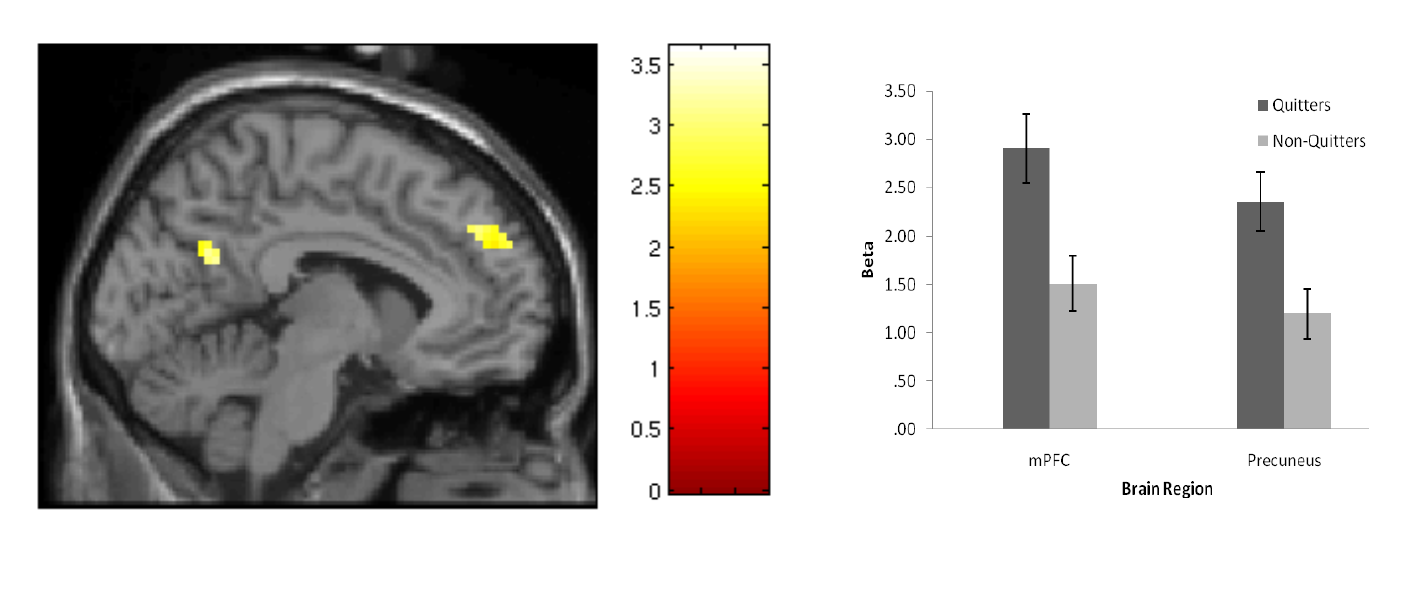Being able to observe neural activity while people think has a number of potential real-world applications, including health behavior and business.
For example, we showed the neural activity in brain regions associated with self-related processing predicts who will respond to a smoking cessation program and actually quit smoking (Chua et al., 2011 ![]() ):
):

Furthermore, we demonstrated a pathway from a serotonin-transporter gene through neural activity to successful quitting (Jasinska et al., 2012, Neuroimage ![]() ). We also showed that serotonin transporter genotype modulates the effect of threat on cognitive control (Jasinska et al., 2012a, Frontiers in Psychology
). We also showed that serotonin transporter genotype modulates the effect of threat on cognitive control (Jasinska et al., 2012a, Frontiers in Psychology ![]() ) and that task difficulty modulates the impact of emotion on the neural response in cognitive control regions (Jasinska et al., 2012b, Frontiers in Psychology
) and that task difficulty modulates the impact of emotion on the neural response in cognitive control regions (Jasinska et al., 2012b, Frontiers in Psychology ![]() ).
).
Dr. Polk also developed a public course on the neuroscience of addiction for The Great Courses. You can get more information here.
On the business side, we collaborated with Carolyn Yoon on an fMRI study investigating whether the “personality” of commercial brands is processed in the same way human personality is processed at a neural level (this is a popular hypothesis in the marketing literature). We reported that they are not (Yoon et al., 2006 ![]() ).
).
